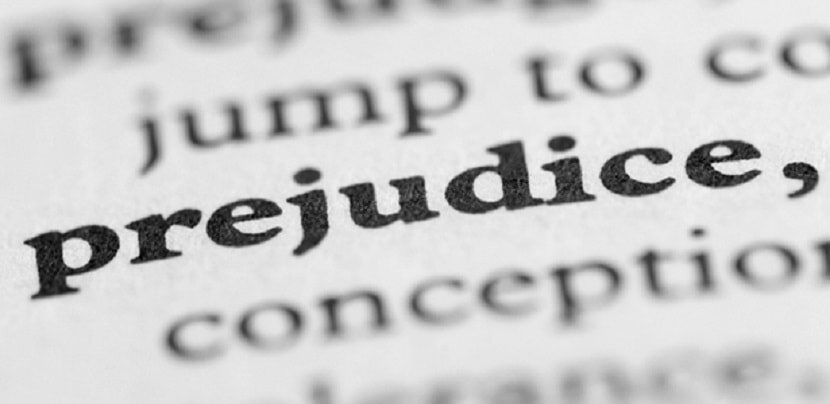Unconscious Bias and Prejudice
We’ve all witnessed or experienced how the outrage following George Floyd’s death has fuelled Black Lives Matter activism across the globe. Issues of race, racism, diversity and inclusion are firmly at the centre of public debate. The moment is ripe for us all to understand how unconscious bias and prejudice work from a psychological perspective, and create awareness within ourselves and our workplaces. In this article I offer insights from my work in neuroscience to help understand prejudice in the mind and ways to overcome it.
Where did all the prejudice and structural inequality come from? Colonial history is certainly under scrutiny, as symbolised by the tearing down of statues. I live in Bristol where, as you undoubtedly know, the toppling of Edward Colston’s statue into the river went viral and brought the eyes of the world to our city. People and communities are demanding more acknowledgement of the legacies of colonialism and the ways privilege arose from the interests of colonisers, slave traders and industrialists.
Long-held narratives about the supposed inferiority and primitivity of indigenous people from colonised continents settled deeply into the mindsets of white Europeans via culture, media and entertainment over many centuries. These prejudices didn’t stop hundreds of years ago. Objectification continues – for example in the form of racial profiling of black men as ‘dangerous’ and ‘criminal’ in the media, with deadly real-life impacts. If we do not have personal experiences of others to reflect on, the mind operates using the prejudice that it has picked up elsewhere, for instance the media and layers this over its own perception of the world.
What is unconscious bias?
Our brains receive information from our environment and sources such as the media and other people, and over time develop information-processing shortcuts to help us make faster decisions. This shortcutting leads to unconscious bias; a natural propensity of the human brain to recognise and prioritise the familiar and known, and learn from others. It is a natural and unintended process, but one we have to mitigate if we are to build diverse and unprejudiced workplace cultures. Otherwise, these unconscious biases will influence decisions in recruiting, promoting staff, and recognising legitimate talent and achievement – and at worst it leads to stereotyping and discrimination.
The way that the brain stores information can lead to prejudice and stereotyping
Why are our brains so malleable in terms of absorbing other people’s views of the world? It’s to do with how our minds are programmed for keeping us safe and aware of potential danger. The mind management approach I bring to my work is the remarkable ‘Chimp Paradox’ model, created by my former boss Professor Steve Peters. The Chimp Model brilliantly describes the interplay of our mind’s three teams; chimp, human and computer. In previous blogs I’ve talked about how to nurture the chimp to create clarity and manage mindset. Here I want to introduce the neuroscience perspective on prejudice, by focusing on the role of the computer. If we have a positive and negative experience of a stimulus, our computer will automatically be programmed with the negative belief, because it has a negative bias towards remembering the threat.
For example, we may have a number of great bosses before working for someone who publicly undermines us during meetings. This negative experience is the one we will carry with us to the next job. This can lead to further anxiety in meetings, even if our new boss is supportive and encouraging. Despite it having been only one poor encounter with an unpleasant boss, the mind has now been programmed with ‘bosses are threatening’, setting up our mindset for fear.
The point I am making here for prejudice is that, if a malleable mind – which all humans have by virtue of being human – is programmed with images of people being portrayed in a negative way, imprints will be made in our computer. This produces threat signals when we come across a person in real life with similar characteristics.
If we are to commit to dismantling unconscious bias along with racism, I believe we have a responsibility to become conscious of our stored messages and more self-aware. We must become dextrous at viewing people and situations in the light of what we ourselves experientially know of them, rather than reacting from the conditioning we’ve soaked up from media and racist rhetoric. We cannot easily avoid having that reaction – the brain will ‘offer’ it to us – but we can challenge the prejudice in spontaneous thought and choose a more real response.
Ways you can challenge unconscious bias and prejudice in the mind:
Be aware that unconscious bias exists and is normal.
Explore the judgements you may hold about other people – are they based on your own experience or have they been unconsciously uploaded?
In the workplace – and in particular when recruiting or promoting – make decisions based on evidence. Record the reasons for your decisions.
Encourage yourself to be more curious about people from different heritages and backgrounds than your own.
A negative experience of a stimulus can create a threat pathway in the mind and cancel all previous positive experiences of that same stimuli. To reset the neurological pathway actively imagine how you want to be when dealing with the stimulus moving forward. In the example of bosses, you can create a new pathway by proactively imagining being ‘calm, assertive and confident’ when dealing with the new boss.
In what other ways could you – or do you – overcome unconscious bias and prejudice in the mind?


